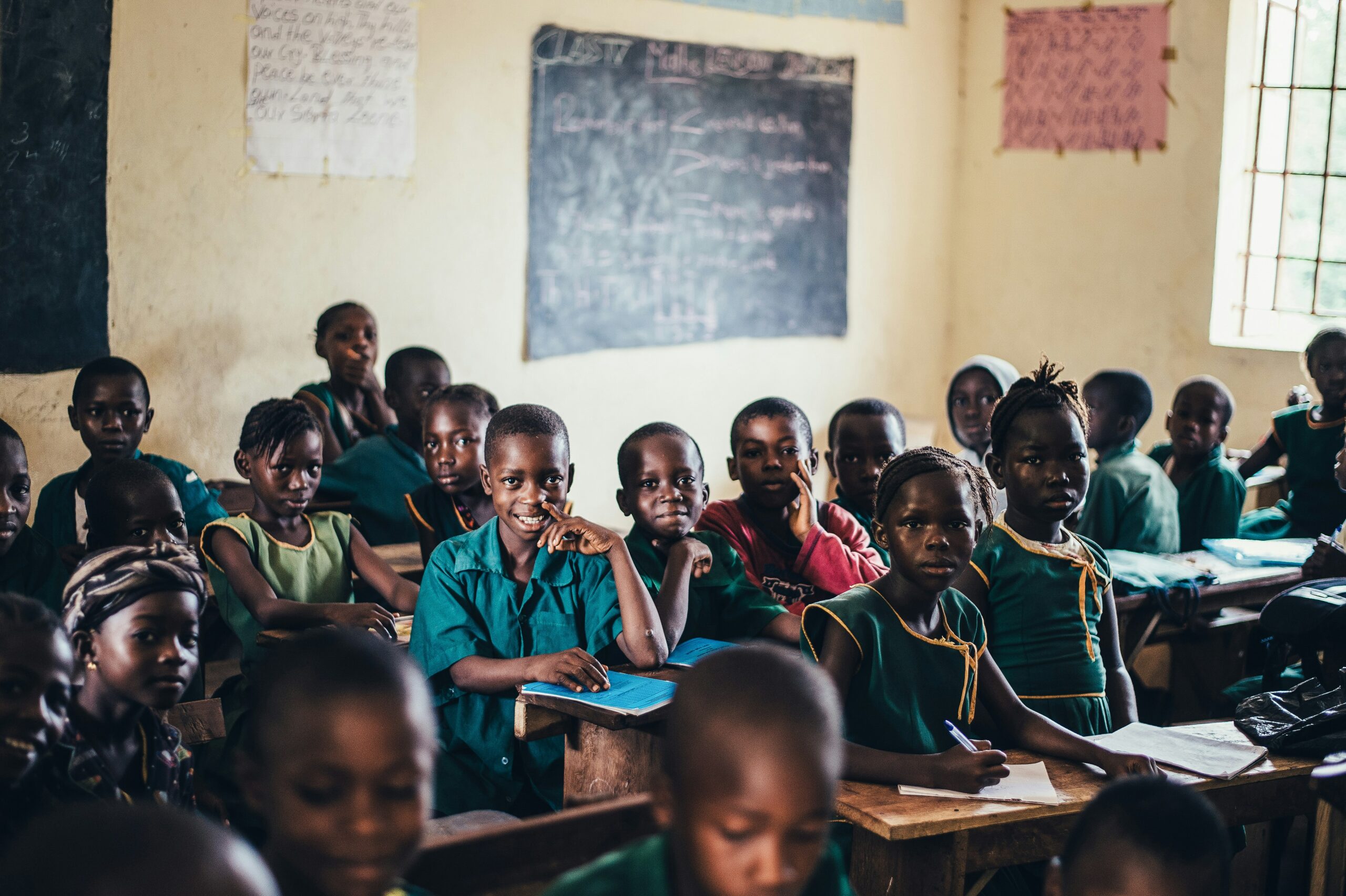Reading and writing are life skills that make a huge difference in a human’s life, especially today. How are writers and thought leaders made? First, they learn to read, and while many adults may not exactly remember how reading started for them, it’s pretty much the same for almost everybody: With the help of a teacher. As an educator, this is my core focus.
Oftentimes, the kind of learning environment available to students determines how much they get out of their learning and how solid a foundation has been laid for their ability to read and write effectively. Two significant factors that help maximize the environment for students are: 1) Making sure the environment is positive. 2) Making sure it is culturally responsive.
Building Positive Learning Environments
Developing literacy and the interest of reading in students is essential for much of students’ other learning in both their present and later life, and this is best achieved when there is a positive classroom environment. Setting high expectations is a major strategy in helping to achieve this sort of environment, and a precursor to ensuring that the students learn to push themselves to limits and attain their full potential. A positive classroom environment is best achieved when these high standards are tailored to each student’s strengths, focusing on the expectations that each student is well aware of and included throughout the curriculum (Ritchhart, 2015).
Five core beliefs encourage setting high standards, and my personal favourite is the “Promoting Independence vs. Dependence” belief. I say this because it is learner-centred, i.e., it is completely focused on the students’ strengths while also putting other factors like their weaknesses, cultural background, etc., into consideration. Building strategies around this belief is an effective way to lay a solid foundation for a reading culture and literacy skills that would be beneficial to the students’ future and life in general.
There are different reasons why it is important to encourage independence rather than dependence in students. An important one is the fact that independent students usually have a high sense of efficacy and are intrinsically motivated, two factors that are key ingredients for developing resourcefulness, effectiveness, and internal eagerness towards achieving individual goals with or without supervision and regardless of challenges. While dependent students can be the complete opposite, often lacking endurance when faced with challenges, and usually less creative and motivated (Ritchhart, 2015).
Strategies that a teacher can use to promote independence in the classroom include the following:
- Goal Setting
One major strategy is making sure to set goals for students consistently, and this is different from just giving them assignments. It could be anything from tasks related to their personal lives to a collective goal that the entire class is working towards. By integrating persistent goals in classroom instructions, teachers help their students to be motivated to do research and make new discoveries where needed. In doing this, the teacher also manages to keep the students focused while also making them better goal-setters (Regan, 2013).
This strategy further encourages student motivation by developing their minds, giving them new ideas to work on, and keeping them excited. This strategy can also promote a positive classroom environment by successfully turning the classroom into a focused, interactive, and attentive workroom (Regan, 2013).
- Encouraging Collaboration and Social Interaction Between Students of Like Minds
This is a strategy that always helps students learn from each other. As it is an intrinsic enthusiasm, students are more likely to want to learn from one another as they already share common traits or interests (Mullings, 2019). This can be done by creating tasks and projects that will likely have students search for explanations, meanings, and resolutions together to help them achieve the utmost result.
This strategy encourages student motivation by pushing them to deal with situations that simulate what it’s like in the real world and have them make new friends. This strategy can also promote a positive classroom environment by building trust and open communication.
- Using Lessons from Past Errors to Help Students Build Confidence in Their Abilities
When a teacher helps students identify lessons from their mistakes, it helps them recognize that making mistakes is part of learning, thereby encouraging them to look beyond failures and not be discouraged when they make mistakes. Independent-learner students are likely to make mistakes more often as they are mostly self-guided (Regan, 2013), so this strategy is important not only for the students’ confidence but also to reiterate the teacher’s belief in their method. One way of using this strategy is to help students reflect on their shortcomings and keep track of them, learning from them as they progress, and doing an accountability check at fixed intervals to measure progress. Teachers need to remind their students of their little victories, the small wins that will lead to the big picture.
This strategy encourages student motivation and makes students more responsible for themselves. It helps them learn to own up to their shortcomings, and this strategy can also promote a positive classroom environment by achieving a classroom filled with students who believe they can achieve anything they put their minds to.
Building Culturally Responsive Learning Environments
A culturally responsive environment is the kind that recognizes that all students are likely culturally diverse, i.e., being aware that a classroom contains students who are cross-cultural and multicultural. This awareness encourages teachers to support cultural, ethnic, and societal diversity by using their prior knowledge and experiences to assist students in their learning (EduSys, 2019).
Educational leaders play a very important role in encouraging culturally responsive practices, as implementing this idea must begin from the curriculum, the diversity in teaching staff, and general inclusivity in the educational system.
For teachers, cultural responsiveness encompasses pedagogical practices that focus on equality and encourage diversity (Ebersole et al, 2016). Classroom activities should encourage students to learn new things from other students whose backgrounds differ. The teaching can also formalize the teaching of diverse places, events, and important people. Teachers can ask students to do different cultural and ethnicity research, such as making special kinds of food, learning different songs from different cultures, learning about their various styles, such as their dance, dressing, etc. (Ebersole et al, 2016). All these can be a major part of the curriculum or done as extra-curricular activities.
When the resources are available, teachers can have the students go on excursions, tourism trips to some of the diverse places discussed in the classroom for better social relations and exposure. With all this, students should be put up to challenges and encouraged to collaborate on tasks, as a way to help them feel connected to one another. Their self-worth and esteem would improve, resulting in a significant confidence boost. In a classroom where culturally responsive pedagogy is practiced, bridges are built that connect students, teachers, schools, and the community.
How does this tie into literacy? Writing is always easier to do when you have soaked up new experiences, especially ones that are entirely out of what you’re used to in your immediate cultural space and identity. In a culturally stimulating classroom, students are always happy to write and share their experiences with others.
Bibliography
EduSys, (2019). Culturally Responsive Teaching. Retrieved from https://www.edusys.co/blog/culturally-responsive-teaching
Ebersole, M., Kanahele-Mossman, H., Kawakami, A. (2016). Culturally responsive teaching: Examining teachers’ understandings and perspectives. Journal of Education and Training Studies, 4(2), 97-104. Retrieved from https://files.eric.ed.gov/fulltext/EJ1080851.pdf
Mullings, C. (2019). Developing independent learning skills that improve outcomes. Retrieved from https://blog.irisconnect.com/uk/blog/9-tips-for-encouraging-students-to-become-independent-learners/
Ritchhart, R. (2015). Creating cultures of thinking: The 8 forces we must master to truly transform our schools. Retrieved from https://proxy.lirn.net/MuseProxyID=mp02/MuseSessionID=0004wvo/MuseProtocol=https/MuseHost=ebookcentral.proquest.com/MusePath/lib/univ-people-ebooks/reader.action?docID=1895847
Regan, M (2013). 3 Strategies to Promote Independent Thinking in Classrooms. Retrieved from https://www.edutopia.org/blog/3-strategies-promote-independent-thinking-margaret-regan
Aminat Adesanya
Aminat Adesanya is a Nigerian mother, wife, poet and educator. She has an undying love for cooking, teaching, and kids. She scribbles poems in her personal journal and shows them to other people from time to time. She is presently homeschooling her kids and preparing for her PhD. Her work has been published in Call+Response Journal and The Journal of African Youth Literature (JAY Lit).




